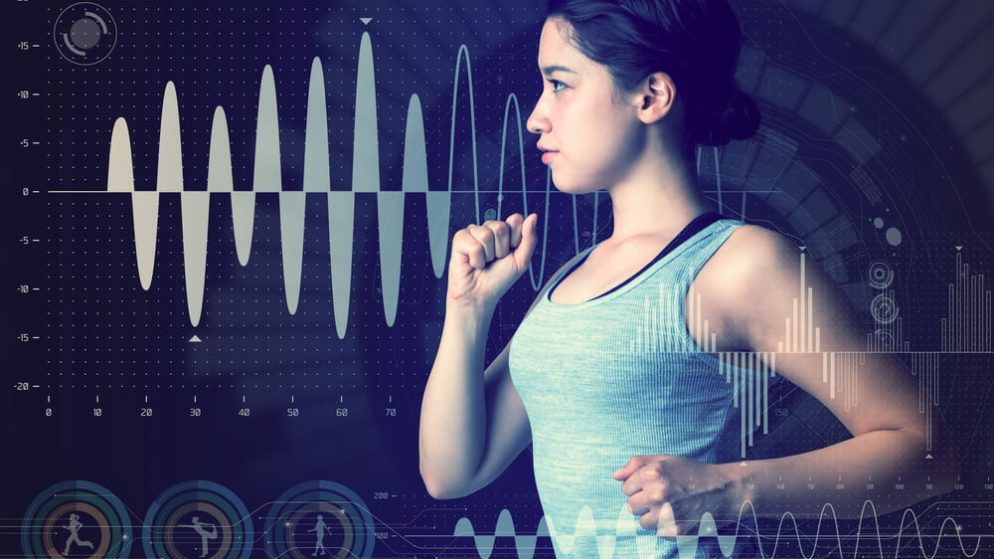



Get new exclusive access to healthcare business reports & breaking news




Your core body temperature is a crucial measuring tool. It can determine the capacity of heat generation and expulsion from the human body. What is most interesting to note is that your body’s core, or internal temperature, can remain stable even as the outer body temperature fluctuates. Sports science has found that tracking core temperatures can improve gains during training and increase success when monitored during competition.
A Bit O’ History
Before we get too far into core temperatures, we should step back in time and look at the start of sports science. Sports science dates back to ancient Greece and the year 210 AD. At that time, a Greek physician saw that nutrition could improve sports performance when combined with aerobic activity. The concept resurfaced in 1996 when sports science was added to the Premier Football League training program. The results that followed led sports science to gain credibility in England. Other sporting teams and leagues soon caught on, and sports science became a vital part of the world of sporting activity.
Why Measuring Core Body Temperature Assists Athletes
Two key measurements can be useful during physical activity. They are your heart rate and your body temperature. Heart rate monitors have been around for many years and provide information related to the number of beats per minute of the human heart when stressed by exercise or other forms of movement. During exercise, muscles will generate heat, and sensor devices provide data related to the core body temperature. The body regulates core temperature through respiration (breathing) and perspiration (sweating).
Your fitness level can be determined by how your body uses respiration and perspiration to control your core temperature. By carefully monitoring your core temperature, you can safely prevent heat stress and use heat training. When you can tolerate high heat and still perform a sporting activity at a high level, this is an indication of your level of conditioning. The better your heat conditioning becomes, the better you can perform in the heat. Some athletes are faced with adverse conditions in playing their specific sport. Heat training assists them in dealing with these conditions.
Sports Scientists On Heat Training
Heat training has many proven benefits. Heat training researcher Carsten Lundby, Ph.D., a professor at Inland Norway University of Applied Sciences, says that heat training has produced an increase in hemoglobin and minor changes in exercise performance parameters. This data comes from several heat training studies he has conducted. A recent study published in Experimental Physiology reveals that elite riders who heat trained five hours weekly for five weeks had a 5 percent increase in hemoglobin mass.
According to Michael Sawka, Ph.D., the chief scientific officer of Environmental Physiology and Hydration Associates, heat training is a sensible exercise for riders preparing to participate in races that will be held in hot locations or during the heat of the day. Sawka is also an adjunct professor of biological sciences at the Georgia Institute of Technology. A study published in 2016 and appeared in the Scandinavian Journal of Medicine and Science in Sports verifies Sawka’s statement. In it, it shares data on an experiment that saw athletes who followed exercise with a hot bath for six days improved their sweat response and their 5-kilometer running performance. These athletes experienced a 5 percent better time but saw little change or no faster times when running in moderate temperatures.
What They Had To Say
Sawka says that traditional heat training methods are better. That means riding at an intense pace for a week or two for an hour in the heat instead of using hot water baths. “So if you’re heading somewhere hot for a big event, heat training for acclimatization is important.” As for monitoring core temperatures in real-time during competition, Sawka says the harder you work, the higher your core temperature will get. “You can get a very high core temperature if you’re biking. It could be safe. It could not be safe. It depends on a lot of things, like skin temperature.” He adds that if you are sweating and the environmental conditions permit the sweat to evaporate, which keeps your skin cool, your core temperature can increase significantly and become dangerous without constant monitoring.
How To Best Monitor Core Temperatures
Aside from being in a laboratory setting, monitoring the core temperature has not been easy. The only two methods in place were either the use of rectal thermometers, which would be impossible during competition or the use of electronic pills that an athlete would swallow. The latter option was costly and would require monitoring equipment that was not very mobile. That has changed with the introduction of CORE body sensors. These wearable devices utilize a thermal energy transfer sensor to gauge your core temperature. Although scientists question these devices’ accuracy, they provide data from measurements taken from the heat that leaves the body through the skin. Sawka is skeptical of the technology, “It might be representative of core temperature in some conditions.” He adds that it may not be in other conditions. That is just one of many CORE body temp opinions.
Final Thoughts
There is scientific evidence that backs up the concept of heat training as being beneficial to athletes. Heat training is essentially exercising in the heat. Exercise in general heats up the body as muscles are worked. Those muscles generate heat which assists in enhancing performance. There are measuring tools available that aid in monitoring how warm the core body temperature becomes. Thanks to new technology, existing measuring devices have been complimented by wearables that permit real-time tracking. With real-time tracking, athletes can alter their workouts to prevent heat stress or increase the intensity of their workout to improve their body conditioning. This would not be possible with heart monitors alone. Wearable devices have opened the door to better conditioning and much safer conditioning.